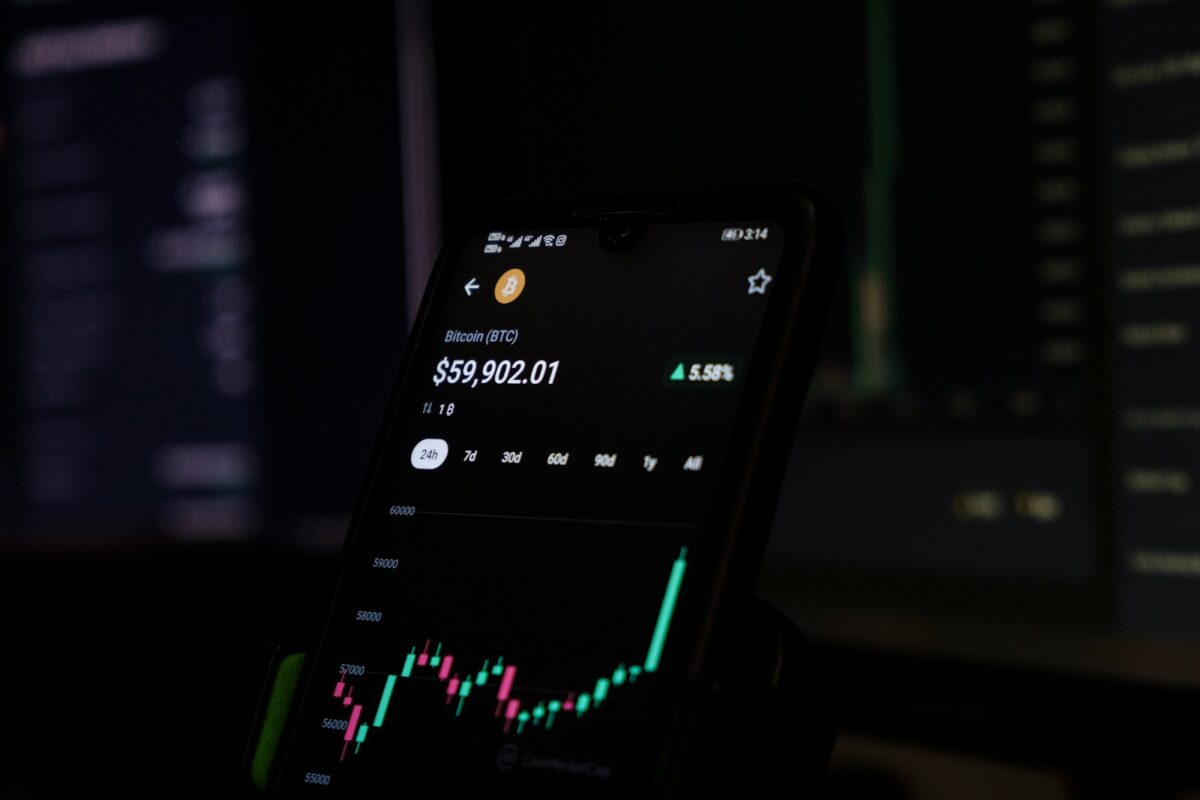
Crypto volatility causes explained

Price swings in decentralized markets predominantly arise from imbalances between supply and demand. Limited liquidity exacerbates these shifts, where even modest trade volumes can trigger substantial changes. Careful monitoring of order books reveals how thin depth layers contribute to rapid price adjustments, signaling heightened sensitivity to market moves.
Speculation plays a central role by injecting psychological factors that amplify uncertainty. Traders reacting to news, rumors, or technical patterns create feedback loops accelerating price movements beyond fundamental values. Experimental approaches analyzing sentiment indicators alongside transaction data help quantify this speculative impact and suggest strategies for risk mitigation.
The degree of adoption also influences stability; broader acceptance tends to enhance resilience by diversifying participants and increasing transactional utility. Conversely, regulatory announcements introduce abrupt shifts by altering perceived risk profiles. Systematic studies comparing jurisdictional responses highlight how legal frameworks modulate market behavior and investor confidence.
Understanding the Drivers Behind Cryptocurrency Price Fluctuations
The primary factor influencing the rapid changes in cryptocurrency prices is the imbalance between demand and supply. Unlike traditional financial assets, many cryptocurrencies have a fixed or algorithmically controlled supply, which limits availability. When demand surges–due to factors such as increased adoption by institutional investors or retail users–the market reacts with sharp price adjustments. Conversely, sudden drops in interest or sell-offs can cause swift declines, reflecting the sensitive relationship between quantity available and user desire.
Regulatory developments play a significant role in shaping investor sentiment and market dynamics. Announcements from governments or financial authorities regarding restrictions, taxation policies, or legal frameworks introduce uncertainty and risk assessments that directly affect market behavior. For example, when a major economy announces tighter controls on digital asset trading, immediate price corrections often follow as traders recalibrate expectations about future accessibility and legality.
Speculation’s Role in Market Dynamics
Speculative activity amplifies fluctuations by fueling rapid buying and selling cycles driven more by short-term profit motives than fundamental valuation. Traders reacting to technical signals, news events, or social media trends create feedback loops where price swings trigger further speculative moves. This phenomenon increases overall instability and complicates efforts to establish stable pricing benchmarks within the ecosystem.
The rate of adoption also significantly impacts price stability. As more merchants, platforms, and users integrate cryptocurrency into everyday transactions, demand becomes more predictable and less influenced by speculative impulses. Case studies of projects achieving widespread acceptance demonstrate subsequent reductions in abrupt price shifts due to a diversified user base relying on tokens for utility rather than investment speculation alone.
Market liquidity is another pivotal element affecting pricing behavior. Higher liquidity typically translates into smoother transactions with smaller spreads between buy and sell orders, dampening erratic movements. Conversely, markets with limited participants or low transaction volumes experience exaggerated responses to relatively small trades, intensifying fluctuations and increasing risk for all actors involved.
The complex interplay between these elements defines the inherent risk profile associated with digital asset investments. Understanding how shifts in regulation, speculative behavior, market depth, adoption trends, supply limitations, and demand patterns interact provides valuable insight into forecasting potential price trajectories.
This ongoing exploration invites deeper investigation through monitoring key indicators such as order book depth metrics, regulatory announcements timelines, adoption milestones reported by blockchain analytics firms, and sentiment analysis derived from social platforms–all contributing toward building a comprehensive framework for anticipating market movements grounded in empirical data rather than conjecture.
Market Liquidity Impact
Liquidity fundamentally governs the stability of price movements within cryptocurrency markets. High liquidity typically reduces abrupt fluctuations by allowing larger volumes to be traded without significant price shifts, whereas low liquidity exacerbates price swings due to thin order books and limited supply at given price points. For instance, major exchanges such as Binance or Coinbase exhibit deep liquidity pools that help moderate volatility, while smaller platforms or newly listed tokens often experience sharp price changes driven by sparse market depth.
Adoption levels directly influence market liquidity through expanding demand and increasing transaction frequency. As more participants enter the ecosystem–ranging from retail investors to institutional players–the supply-demand balance tightens with improved order book depth. This dynamic was observable during Bitcoin’s 2020–2021 surge when increased adoption led to thicker markets, thus slightly stabilizing price behavior despite heightened speculation. However, rapid influxes can temporarily strain liquidity if infrastructure and market makers cannot keep pace.
Supply Constraints and Speculation Effects
Limited circulating supply coupled with speculative trading amplifies sensitivity to market orders, intensifying price oscillations. Tokens with fixed caps or locked reserves present a constrained supply profile; when combined with speculative demand spikes, this scarcity triggers pronounced fluctuations. A case study involves Ethereum’s network upgrades where anticipation-driven speculation caused substantial intraday price variation prior to actual protocol changes, highlighting how perceived future adoption influences current market dynamics.
Regulatory announcements significantly alter liquidity conditions by shifting participant behavior and confidence levels. Sudden regulatory clarity or ambiguity can either boost market engagement–thereby enhancing liquidity–or trigger withdrawals that shrink order books and widen bid-ask spreads. For example, China’s 2017 ban on initial coin offerings (ICOs) induced a swift exodus in affected assets, causing extreme illiquidity and volatile pricing patterns for weeks following the decree.
Demand Fluctuation Mechanisms
Demand variability interacts closely with liquidity to shape pricing trends over short and medium terms. Sharp increases in buying interest encounter available sell orders; when sell-side depth is insufficient, prices escalate rapidly until new sellers emerge or demand subsides. Conversely, sudden sell-offs overwhelm limited buy orders in low-liquidity environments leading to steep declines. Empirical data from decentralized exchanges demonstrates that lower liquidity pairs experience up to 5x greater intraday price swings compared to highly liquid counterparts under comparable trade volumes.
Mitigating Price Instability Through Market Design
Improving market design elements such as automated market makers (AMMs) and enhanced order matching algorithms contributes to mitigating excessive fluctuation caused by poor liquidity. AMMs like those used in Uniswap dynamically adjust token prices based on pool ratios, offering continuous liquidity even for less popular assets. Nonetheless, these mechanisms introduce unique impermanent loss risks affecting long-term participation incentives–a factor influencing overall supply availability and consequent price stability.
The interplay between these variables forms a complex system where enhancing transparency around supply data and fostering diverse buyer-seller participation emerges as an experimental pathway toward achieving more stable pricing regimes. Researchers are invited to analyze granular trade data across multiple platforms using methodologies such as order flow imbalance metrics and microstructure noise estimation models to quantify the precise impact of varying liquidity states on asset value trajectories.
Role of Speculative Trading
Speculative trading significantly impacts market dynamics by amplifying price fluctuations through rapid buying and selling based on anticipated demand rather than intrinsic value. This behavior often leads to sharp deviations from equilibrium prices as traders respond to short-term signals, creating pronounced oscillations in asset valuation. Empirical data from blockchain transaction records indicate that periods with elevated speculative activity correspond directly with increased variability in supply-demand balance, driving more erratic price movements.
Supply constraints combined with speculative demand intensify these effects, especially when liquidity is limited. For instance, during moments of sudden news releases or regulatory announcements, speculative traders rapidly adjust positions, exacerbating the mismatch between available supply and effective demand. Such conditions heighten risk for all participants since the market can exhibit exaggerated responses, deviating substantially from fundamental valuations within a compressed timeframe.
Regulatory frameworks play a pivotal role in moderating speculative pressure by imposing transparency requirements and restrictions on leverage usage. Studies comparing markets with differing oversight levels reveal that stricter regulation correlates with reduced amplitude of price swings caused by speculation-driven trading. However, excessive intervention may inadvertently suppress legitimate hedging strategies, underscoring the need for balanced policies that mitigate extreme fluctuations without stifling healthy market functions.
Analysis of order book microstructure demonstrates how speculative orders cluster around key technical levels, producing feedback loops that reinforce volatility patterns. Algorithmic trading models confirm that when speculation dominates market sentiment, the probability of abrupt reversals or flash crashes increases due to synchronized actions among automated systems reacting to similar stimuli. Investigating these phenomena through controlled simulations offers valuable insights into managing systemic risk inherent in heavily speculated environments.
Influence of regulatory news
Regulatory announcements directly impact the supply-demand balance in blockchain markets, triggering rapid price fluctuations. When authorities introduce new rules or clarify legal frameworks, market participants adjust their positions, anticipating shifts in adoption rates and trading restrictions. For example, a sudden ban on certain transactions can reduce liquidity supply temporarily, intensifying speculative movements and causing sharp price swings.
Conversely, positive regulation often signals increased institutional participation and broader acceptance of decentralized assets. Such developments typically elevate demand as new investors enter the market under clearer compliance conditions. This enhanced confidence tends to stabilize prices over time; however, initial reactions frequently include abrupt adjustments due to uncertainty about implementation details and enforcement mechanisms.
Mechanisms behind regulatory impact on market dynamics
The announcement of regulatory changes acts as an external shock disrupting equilibrium between asset availability and investor interest. Supply constraints may arise if custodians or exchanges halt withdrawals or listings in response to updated compliance requirements. This contraction reduces circulating volume temporarily, which combined with heightened demand driven by speculation on long-term effects, results in pronounced price oscillations.
Demand elasticity relative to regulation varies depending on jurisdictional differences and perceived stringency. Markets with ambiguous legal status often experience amplified speculation because traders seek arbitrage opportunities created by uneven enforcement across borders. These conditions foster rapid influxes or outflows of capital that exacerbate market instability until clarity is achieved.
Case studies from multiple regions illustrate how announcements modify sentiment and trading behavior:
- In 2017, South Korea’s potential cryptocurrency ban led to a significant drop in exchange volumes and prices as users anticipated restricted access.
- The U.S. Securities and Exchange Commission’s decisions regarding token classifications periodically induce volatility spikes when they hint at stricter securities laws application.
- The introduction of comprehensive AML/KYC policies in Europe has gradually increased adoption while reducing wild speculation by imposing higher entry barriers for illicit actors.
Monitoring regulatory developments requires analyzing official statements alongside market data such as order book depth, transaction velocity, and exchange inflows/outflows. By correlating these indicators with timing of news releases, researchers can quantify the magnitude of induced fluctuations and distinguish transient speculation from sustained demand growth linked to genuine adoption trends.
Effect of Technological Updates on Market Dynamics
Technological upgrades directly influence asset price fluctuations by altering supply mechanisms, demand patterns, and adoption rates. For instance, protocol improvements that enhance transaction throughput or security reduce systemic risk, often leading to increased market confidence and subsequent price stabilization. Conversely, incomplete or controversial updates can introduce uncertainty, amplifying short-term fluctuation intensity as participants reassess valuation models.
Regulatory responses to these innovations further modulate market behavior. When jurisdictions recognize and integrate new technological standards, barriers to adoption decrease, increasing demand and positively impacting price levels. However, regulatory ambiguity or restrictive policies might constrain supply dynamics or limit participation, thereby intensifying oscillations in value.
Key Technical Insights and Future Implications
- Network Upgrades and Supply Adjustments: Hard forks or consensus algorithm shifts frequently adjust coin issuance rates or staking rewards. Such changes impact circulating supply elasticity, triggering recalibrations in pricing models sensitive to token scarcity.
- Scalability Enhancements: Layer-2 solutions and sharding technologies reduce transactional latency and fees, promoting broader adoption. This expansion of user base elevates demand metrics but may induce transient instability during deployment phases.
- Security Protocols: Integrating advanced cryptographic methods mitigates attack vectors and systemic vulnerabilities. The resultant reduction in operational risk often translates into improved investor confidence and moderated price swings.
- Interoperability Features: Cross-chain bridges facilitate asset mobility across ecosystems, influencing liquidity distribution. Variations in inter-network capital flow create complex feedback loops affecting local market volatility profiles.
The interplay between technological progress and regulation shapes the trajectory of asset valuation unpredictability. Monitoring update schedules alongside compliance developments enables anticipation of potential fluctuation periods. Researchers should consider multi-factor models incorporating both on-chain metrics–such as hash rate shifts post-upgrade–and off-chain indicators like policy announcements to forecast future market behavior with higher precision.
Sustained analysis of these phenomena will inform strategic decisions around risk management and portfolio allocation. As networks evolve toward greater efficiency and inclusivity, the balance between innovation-driven growth in demand and emergent uncertainties will dictate the amplitude of price variations over time.


